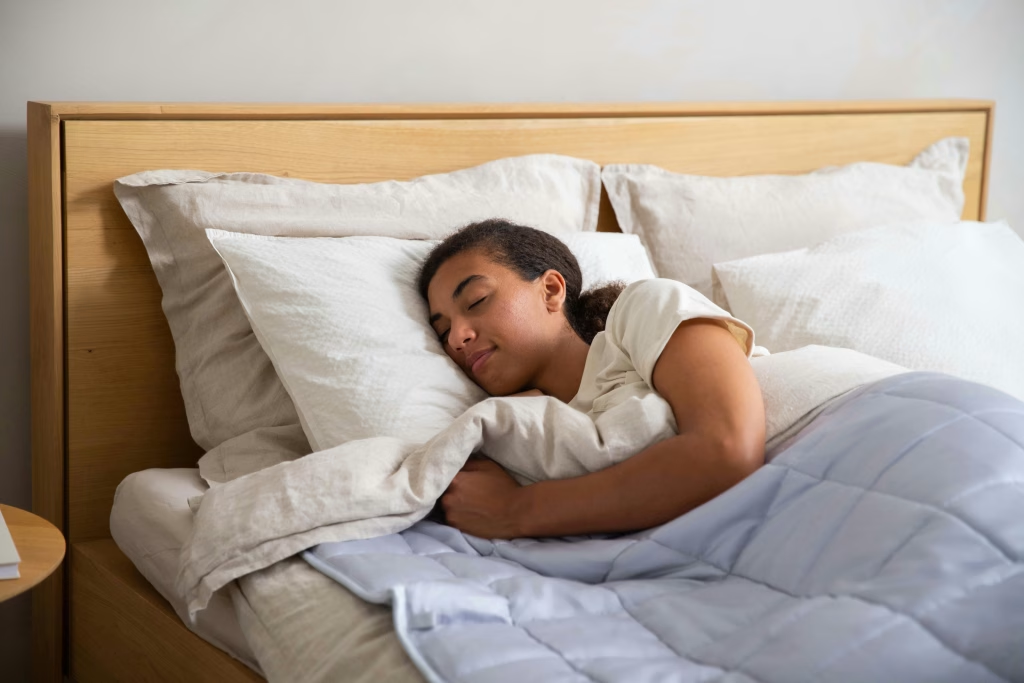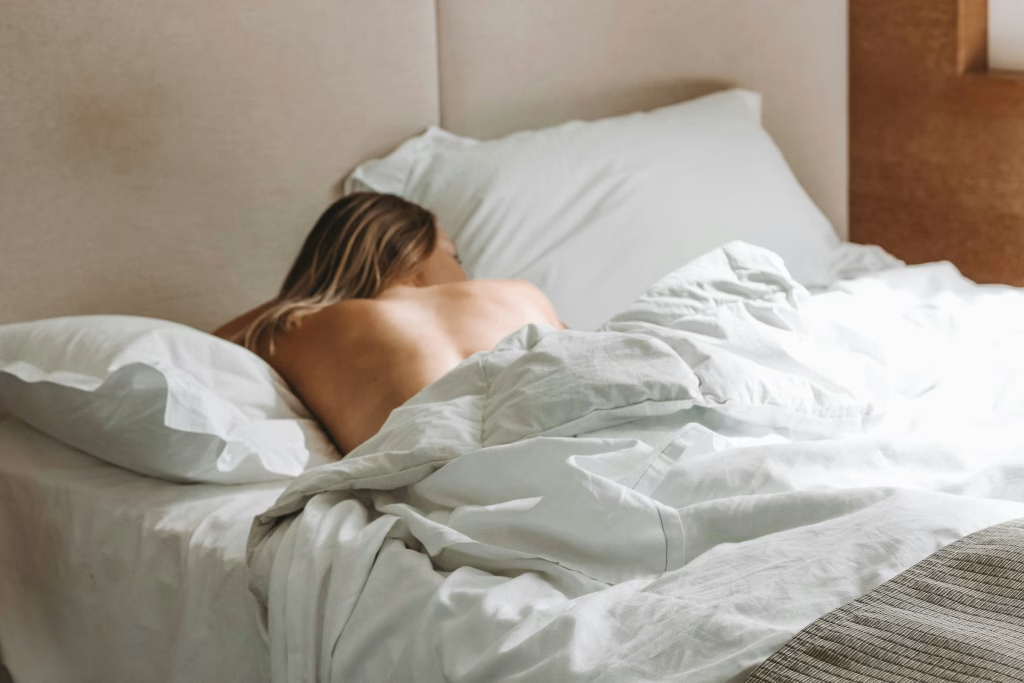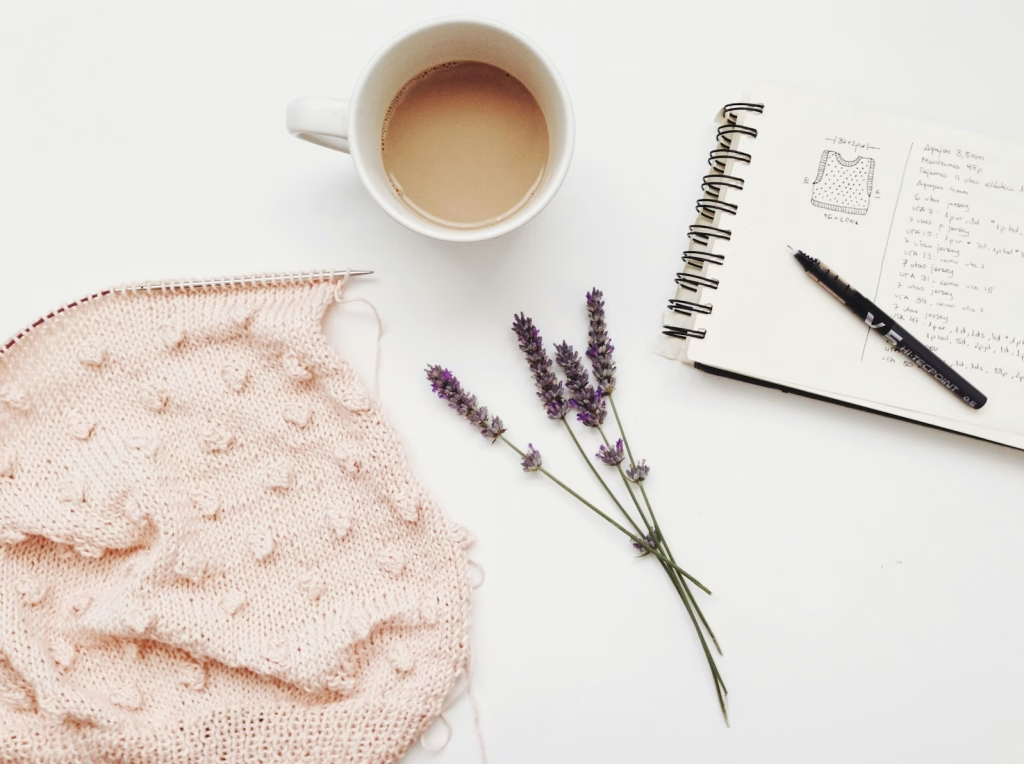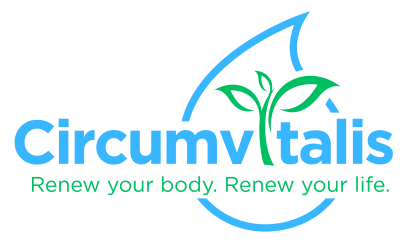Listen. If you’re reading this at 12:47 a.m., cradling your third mug of chamomile tea and Googling “is it normal to wake up sweating and humming 90s pop songs in the dark,” welcome. You’re among friends. You’re likely in The Menopause Club. Population: us. Motto: “I swear I used to sleep fine.”
Let me tell you something. I used to be a champion sleeper. Olympic-level. Eight hours, no interruptions. You could’ve run a parade through my room and I wouldn’t have stirred. But now? Now I wake up in the wee hours of the morning. like someone just whispered “perimenopause” into my ear with a megaphone.
If this sounds familiar, you are not broken. You have been transitioning into a fabulous, fiery new phase of womanhood – and yeah, okay, it comes with a few… adjustments. Chief among them: sleep disturbances. So let’s talk about what’s going on, how chronic inflammation is fanning the flames, and how to trick our brains (and bodies) into letting us snooze like we’re on vacation in the Caribbean.

Why Is Menopausal Sleep So Weird?
Let’s get the boring-but-important science out of the way.
During perimenopause and menopause, estrogen and progesterone levels begin to fluctuate wildly. These hormones are like the DJs of your body’s nightclub. Estrogen affects serotonin and melatonin (your sleep hormone), while progesterone is actually a natural sedative. So when those DJs start skipping tracks or randomly quitting mid-set? Your sleep party becomes a hot, sweaty mess.
Common sleep disturbances in perimenopause and menopause include:
- Night sweats: Waking up drenched like you just completed a CrossFit workout in your dreams.
- Insomnia: Either trouble falling asleep, staying asleep, or waking up way too early and then mentally drafting grocery lists, revenge speeches, and business plans for 2 hours.
- Restless leg syndrome: Because apparently our legs are ALSO going through something.
- Mood disturbances & anxiety: That 3 a.m. doom spiral where you relive that one awkward moment from 2003? Thank your hormones.
Wait – How Does Chronic Inflammation Fit In?
Oh yeah. Chronic inflammation. The uninvited guest at this hormonal house party.
Menopause is associated with increased inflammatory markers in the body. When estrogen drops, inflammation tends to rise. Think of estrogen as your body’s firefighter. When she’s in town, she’s putting out little metabolic fires all day. When she starts ghosting you, those fires burn brighter – especially at night.
Inflammation is sneaky. It messes with your immune system, increases cortisol (the stress hormone), and contributes to poor sleep by generally making your body feel like it’s in a low-grade battle all the time.
Signs chronic inflammation is messing with your sleep:
- Achy joints that keep you tossing and turning
- Feeling tired but wired
- Waking up unrefreshed even after 7-8 hours
- Bloating, headaches, or general malaise
So now we’re battling hormones and inflammation. But don’t despair. We are resourceful, resilient, and mildly feral from lack of REM. Let’s get into solutions.
The Sleep Hygiene Survival Guide (a.k.a. Tricks I Learned at 3 a.m. on Google)
Here are the actual things that have helped me and many other peri-warriors sleep better, even when our hormones are throwing Molotov cocktails at our melatonin.
1. Cool It Down, Sister
Night sweats are no joke. One moment you’re dreaming about William Levy in a tux, the next you’re waking up looking like you’ve just birthed a small dolphin.
Solutions:
- Invest in cooling bedding. Bamboo sheets, breathable pillows, and a lightweight blanket are game-changers.
- Fan or AC at night. Some of us need to become the Beyoncé of bedtime: surrounded by wind machines at all times.
- Sleep naked. Or in moisture-wicking pajamas. Or a combination of both if you’re feeling spicy. (Then immediately un-spicy because you’ll get hot again.)

2. Routine is the New Sexy
Gone are the days of staying up till midnight binging crime dramas and eating peanut M&Ms in bed. Now? Consistency is king. Your body craves rhythm, even if your hormones are breakdancing in chaos.
Your new bedtime gospel:
- Same bedtime every night. Yes, even weekends. Yes, I’m serious.
- Wind down 60-90 minutes before bed. No screens. No dramatic texts. No online shopping.
- Warm bath or shower. Not scorching hot – just warm enough to signal to your body it’s sleepytime.
3. Light It Right
Your circadian rhythm is basically a toddler: easily influenced, irrational, and obsessed with the sun.
Daytime light exposure = better sleep at night.
- Get outside early. Even 15 minutes of morning sun can reset your internal clock.
- Avoid bright lights after 8 p.m. That includes your phone, laptop, and interrogation-style overhead lights.
4. Eat (and Drink) Like Sleep Depends on It
Because it does.
Sleep disruptors:
- Caffeine after noon. Even if you “don’t feel it,” it’s lurking.
- Alcohol. That glass of wine may help you fall asleep, but it ruins your sleep quality. Sorry. I understand.
- Sugar or heavy meals late at night. If your body is busy digesting a burrito, it’s not going to prioritize deep sleep.
Sleep-friendly foods:
- Tart cherry juice (natural source of melatonin)
- Magnesium-rich snacks (almonds, bananas, dark chocolate)
- Herbal teas (chamomile, valerian, or the one called “Cup of Calm” which is one of my favourites!)
Also, hydrate. But not too close to bed, unless you enjoy late-night bathroom pilgrimages.
5. Supplements, But Make Them Sensible
I’m not a doctor, but I am a woman who will try almost anything that promises I’ll sleep through the night.
Things that have helped:
- Magnesium glycinate: Calms the nervous system, doesn’t cause weird dreams.
- Ashwagandha: Adaptogen that helps manage cortisol. (n.b. This one can be both energizing and calming, so see how your body reacts when taken in the morning vs evening).
- L-theanine: A calming amino acid I like to call “Zen in a capsule.”
- Melatonin: Small doses, not every night. (Too much can mess with your natural rhythm.)
Always check with a medical professional. (Or your group chat. Both are helpful.)

6. Move That Beautiful Body
Exercise during the day helps regulate hormones, reduce chronic inflammation, and improves sleep. But there’s a caveat – not too late in the evening, or it could rev you up instead of wind you down.
Try:
- 30 minutes of walking
- Light yoga or stretching in the evening
- Dancing in your kitchen to Afrobeats (my personal favourite)
Just move. Your body and your brain will thank you.
7. Deal with the Mental Stuff
Look, anxiety and hormonal mood swings are basically sleep’s evil twins. So let’s give them the attention they’re screaming for (because they will scream louder at 3 a.m. if ignored).
Tools for mental calm:
- Journaling before bed (dump the brain gunk)
- Meditation apps like Calm or Headspace
- Breathing techniques (I do 4-7-8 breathing while glaring at the ceiling)
- Cognitive Behavioral Therapy for Insomnia (CBT-I) – it’s legit!
And if your anxiety is through the roof, talk to a professional. Therapy is not just for people in TV dramas. It’s for us too.
8. Embrace the Nap (Strategically)
Listen, sometimes we need a nap. But keep it short and sweet (20-30 minutes) and not too late in the day or it’ll backfire like that time I thought I could cut my own hair.
Final Thoughts from Your Occasionally Sleep-Deprived Peri-Menopausal Sister
Here’s the thing: we didn’t ask for this hormone rollercoaster. We didn’t volunteer for night sweats, cortisol chaos, or dreams that feature ex-boyfriends from 1998.
But we are strong. We are adaptable. And we can do this.
So be kind to yourself. You’re not failing. You’re transitioning. And with a few tweaks, a lot of patience, and possibly a cooling pillow the size of a small kayak, you can get back to good sleep.
Maybe not every night. But most nights. And that’s a beautiful thing.
Until then, I’ll be here – eating magnesium gummies in bed, whispering affirmations to my nervous system, and sending you love from my lavender-scented lair.
Sleep tight, sisters.
Be well,
Monique
p.s. Fill in the form below to stay in touch for more…we don’t like spam either.
References:
1. Hormonal Changes and Sleep Disturbances in Menopause
Freeman EW et al. (2007). Associations of hormone levels and menopausal status with sleep disturbances. Obstetrics & Gynecology, 110(4), 860–868.
DOI: 10.1097/01.AOG.0000284622.46893.29
Baker FC, de Zambotti M. (2017). Menstrual cycle–related changes in sleep. Sleep Medicine Clinics, 12(4), 579–589.
DOI: 10.1016/j.jsmc.2017.03.003
2. Role of Inflammation in Sleep Disruption
Irwin MR. (2019). Sleep and inflammation: partners in sickness and in health. Nature Reviews Immunology, 19, 702–715.
DOI: 10.1038/s41577-019-0190-z
Zhou Y, et al. (2015). Sleep duration and inflammation: a meta-analysis of prospective studies. Sleep Medicine, 16(5), 565–574.
DOI: 10.1016/j.sleep.2014.12.016
3. Sleep Hygiene and Behavioural Therapy
National Sleep Foundation: Guidelines on sleep hygiene for adults.
https://www.sleepfoundation.org
Edinger JD, Means MK. (2005). Cognitive-behavioral therapy for primary insomnia. Clinical Psychology Review, 25(5), 539–558.
DOI: 10.1016/j.cpr.2005.04.003
4. Magnesium and Sleep
Abbasi B, et al. (2012). The effect of magnesium supplementation on primary insomnia in elderly: A double-blind placebo-controlled clinical trial. Journal of Research in Medical Sciences, 17(12), 1161–1169.
PMCID: PMC3703169
5. Melatonin and Tart Cherry Juice
Pigeon WR, et al. (2010). Effects of a tart cherry juice beverage on the sleep of older adults with insomnia: a pilot study. Journal of Medicinal Food, 13(3), 579–583.
DOI: 10.1089/jmf.2009.0096
Brzezinski A. (1997). Melatonin in humans. New England Journal of Medicine, 336(3), 186–195.
DOI: 10.1056/NEJM199701163360306
6. Blue Light and Circadian Rhythym
Chang AM, et al. (2015). Evening use of light-emitting eReaders negatively affects sleep, circadian timing, and next-morning alertness. PNAS, 112(4), 1232–1237.
DOI: 10.1073/pnas.1418490112



